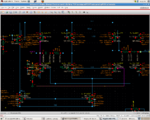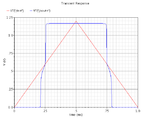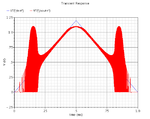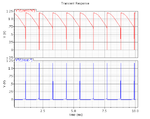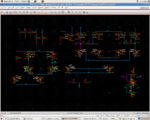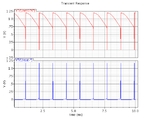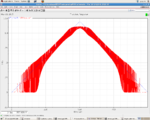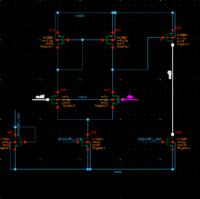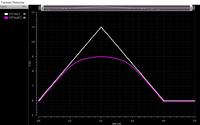nisha gupta
Member level 4
- Joined
- May 22, 2012
- Messages
- 71
- Helped
- 0
- Reputation
- 0
- Reaction score
- 0
- Trophy points
- 1,286
- Location
- Hyderabad, Andhra Pradesh, India
- Activity points
- 1,755
i have designed two stage fully differential OPAMP. i have theoretically calculated output swing, it is coming 172mV to 945mV. power supply is 1.2V in 65nm technology. for checking in voltage swing in simulation i have connected it like a buffer and input sweeped fron 0 to vdd. but output is not tracking input at all. i m attaching plots. plz tell me the region.
